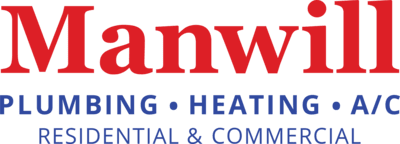
Reverse osmosis systems remove all contaminants in unfiltered water or feed water through a semipermeable membrane. Some of these water pollutants include chlorine and small sediments that aren’t filtered, using a typical plumbing system.
In its simplest form, reverse osmosis water filtration works as the water pressure streams across a semi-permeable membrane. The membrane then filters out any contaminants, leaving behind pollutants to flush down the drain. All of the filtered and clean drinking water will then collect in a holding tank for later use.
To better understand how the process works and why it is increasing in popularity among our Utah plumbers, let’s discuss.
The Reverse Osmosis Process
The reverse osmosis water purification process is fairly simple and straightforward when it comes to water filtration. Once the system achieves the right water pressure, the tap water squeezes through a semi-permeable membrane. This membrane will extract any impurities from the water. You can imagine this process as a strainer that dissolves inorganic solids, like salts, and separates them from the water.
Some of the impurities filtered from the water include fluoride, lead, chlorine, detergents, chloramine, pesticides, sediments, nitrates, and sulfates. Once the water pressure pushes the clean water through the membrane, the contaminants will separate and flush directly down the drain. The final result provides you with clean drinking water that reaches optimal water quality.
The entire process is now a popular form of water filtration that the Utah plumbers at Manwill highly recommend for homeowners and businesses looking for a new plumbing system. Along with clean drinking water, reverse osmosis systems are safe, cost-effective, and easy to maintain.
Advantages of Installing a Reverse Osmosis System
Reverse osmosis water filtration systems are a consistent plumbing system that achieves superior water quality for our clients. Our Utah plumbers often recommend this water filtration option for homes and businesses throughout the state. Along with the benefits mentioned earlier, here are a few of the top advantages of a reverse osmosis system.
Improved Taste
An added perk of installing a reverse osmosis system is that it improves the taste, odor, and appearance of the water coming from the spouts throughout your home. These benefits result from removing impurities from the water that can cause less than desirable tastes and odor problems.
Easy Maintenance
Thanks to the simplistic design of the reverse osmosis system, maintenance is fairly straightforward and easy. These water filtration systems incorporate a few moving parts, so you won’t need to worry about repairs and replacements. Cleaning a reverse osmosis system is easy too.
Cost Savings
Forget water delivery services, spending money every week on bottled water, and refilling your filtered water jug. Reverse osmosis systems make it easy to save money on future water purchases. Reverse osmosis water filtration systems provide you with high-quality water that meets or exceeds any bottle water you can buy.
Improved Water Quality
Reverse osmosis systems filter out any pollutants from your drinking water, including nitrates, pesticides, sulfates, fluoride, bacteria, pharmaceuticals, arsenic, and much more. These filtration systems will also remove chlorine and chloramines.
Components of a Reverse Osmosis System
As stated earlier, there are few components within a reverse osmosis system thanks to its simple design. Here is an outline of each for an in-depth overview.
- Cold Water Line Valve: The reverse osmosis system’s line valve fits onto the water supply line. The valve has a tube that attaches to the inlet side of the pre-filter, which is the system’s water source.
- Pre-Filter(s): Water from the cold water supply line enters the reverse osmosis pre Filter first. These pre-filters protect the membranes by removing sediments that can clog the system.
- Reverse Osmosis Membrane: This component is the heart of the entire water filtration system. It is a semi-permeable membrane that removes a wide variety of contaminants.
- Post filter(s): Once the filtered water leaves the RO storage tank, it goes through a final filter stage, typically a carbon filter. Many of our Utah plumbers refer to this as a “polishing” filter.
- Automatic Shut Off Valve: A reverse osmosis system has an automatic shut off valve that helps conserve water by automatically stopping any more water from entering the membrane.
- Check Valve: The check valve prevents any backward flow of the treated water.
- Flow Restrictor: This component regulates water flow through the RO membrane to obtain the highest quality drinking water. It also helps maintain water pressure.
- Storage Tank: The standard storage tank holds from 2 – 4 gallons of water and is usually 12-inches in diameter and 15-inches tall.
- Faucet: A reverse osmosis unit uses its own faucet, which your Utah plumber will usually install on your kitchen sink.
- Drain line: The drain line runs from the outlet end of the Reverse Osmosis membrane housing to the drain. It disposes of the wastewater containing the impurities and contaminants down the drain.
Reverse Osmosis Systems at Manwill
Manwill offers reverse osmosis system services throughout the Salt Lake area. With the Utah plumbers at Manwill on your side, you will have confidence in your plumbing system. Our master plumbers undergo an extensive training program to ensure you have the experience and training you need in your home. If you are interested in installing a reverse osmosis system in your home or business, contact Manwill today.




